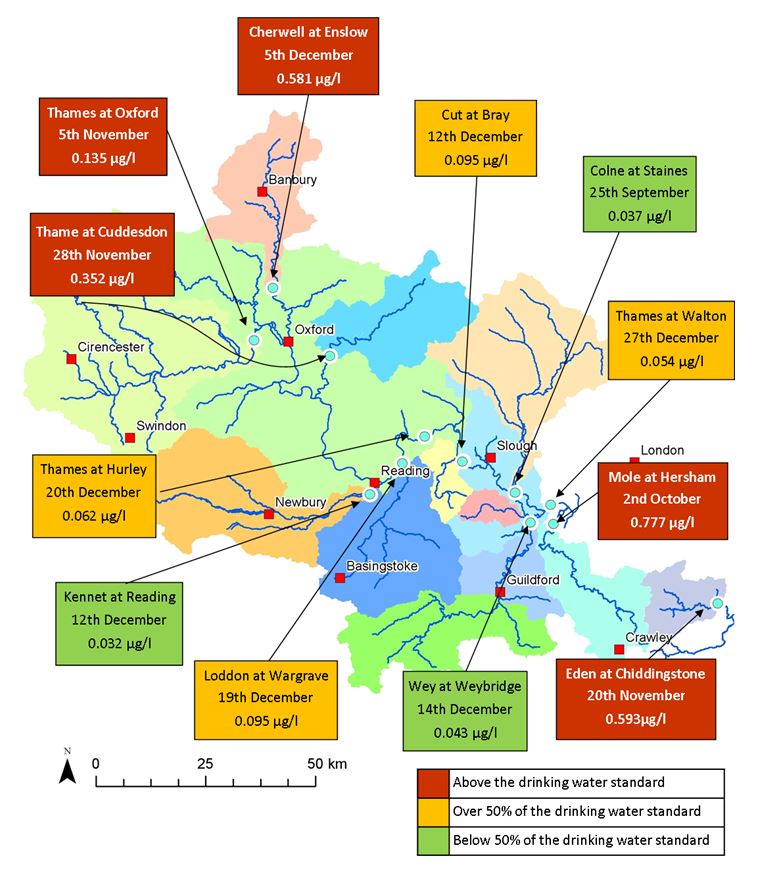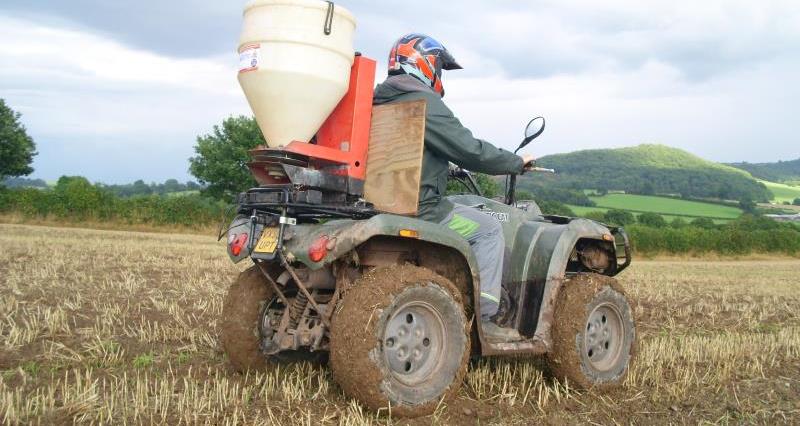Metaldehyde risk in the catchment
The dry summer presents additional risks if you do need to use slug pellets. The dry soil conditions mean that when heavy rain finally arrives, it won’t easily be absorbed into the ground. This means more water will runoff the land, reaching the river quickly and bringing with it any dissolved metaldehyde from pellets on the surface. Where soils are deeply cracked, there’s a further risk. Water on the surface will have a fast-track route to any underdrains present, resulting in an even faster route for water, and therefore metaldehyde, to reach watercourses. Finally, there is also a risk of pellets falling directly into cracks, which puts them far from the crops you want to protect, and first in line to be washed through the system. All of these factors could make this a high risk year for metaldehyde reaching water, even if slug populations are not that large and pellet application is moderate.
Metaldehyde in water remains an issue for your local water companies. Therefore we will be sharing our data to keep you up to date with the latest water quality results this autumn in the Thames basin.
What can farmers and agronomists do to help?
- Consider all your options. Use cultural controls wherever possible to reduce slug populations, for example by using stubble rakes to expose slug eggs to sunlight and rolling your seedbeds to limit slug mobility. Measure slug levels. Is slug pressure high enough to require chemical slug control? If you need to use chemical slug control, consider using ferric phosphate pellets instead of metaldehyde pellets. For more information about integrated pest management, visit https://www.getpelletwise.co.uk/home/integrated-pest-management/.
- Stewardship is key. The Metaldehyde Stewardship Group’s enhanced measures still apply this autumn. This includes a 10m buffer for metaldehyde around any field boundary, as well as any watercourses. For more information visit https://www.getpelletwise.co.uk/home/msg-guidelines/.
- Consider the field risk, by thinking about soil, slope and stream. Heavier soils result in faster runoff and are more likely to be underdrained, therefore resulting in a higher risk of metaldehyde reaching watercourses than for lighter soils. The steeper the slope, the higher the risk, and the closer the ditch or watercourse, the higher the risk. Minimise or avoid the use of metaldehyde on your highest risk fields.
- Consider the timing. If field drains are flowing or when heavy rain is forecast, do not apply metaldehyde pellets. Furthermore, metaldehyde from any pellets which are not eaten and remain intact can be washed off by future rainfall, so ensure you only apply pellets when required.
- Keep water companies informed. The Metaldehyde Stewardship Group is running its GetPelletwise! Agronomic Updates system again this autumn. Agronomists involved complete a short survey each week to tell water companies about field and crop conditions, local slug pressure levels and whether slug pellets are being recommended. This is a big help for water companies as it helps inform abstraction management decisions. So, if you are an agronomist and can spare 5 minutes a week, please get involved: https://www.getpelletwise.co.uk/home/agronomic-updates/.
Last year’s results
This map shows the maximum metaldehyde concentration recorded at each monitoring point last autumn for rivers across the region. High metaldehyde concentrations were detected in many watercourses. Your local water companies need your help to keep concentrations low this year otherwise the use of metaldehyde could be restricted or even banned. In some areas there are water company funded initiatives available to support you, so contact your local water company to find out more. Contact details are at the bottom of this update.

This autumn…
We will soon start sharing our data each week, so keep an eye out for results from your local river and remember, every field counts!
To find out more please contact:
Q2F0Y2htZW50TWFuYWdlbWVudEBhZmZpbml0eXdhdGVyLmNvLnVr, Y2F0Y2htZW50QHNlc3dhdGVyLmNvLnVr, Y2F0Y2htZW50QHNvdXRoZWFzdHdhdGVyLmNvLnVr or Y2F0Y2htZW50Lm1hbmFnZW1lbnRAdGhhbWVzd2F0ZXIuY28udWs=
